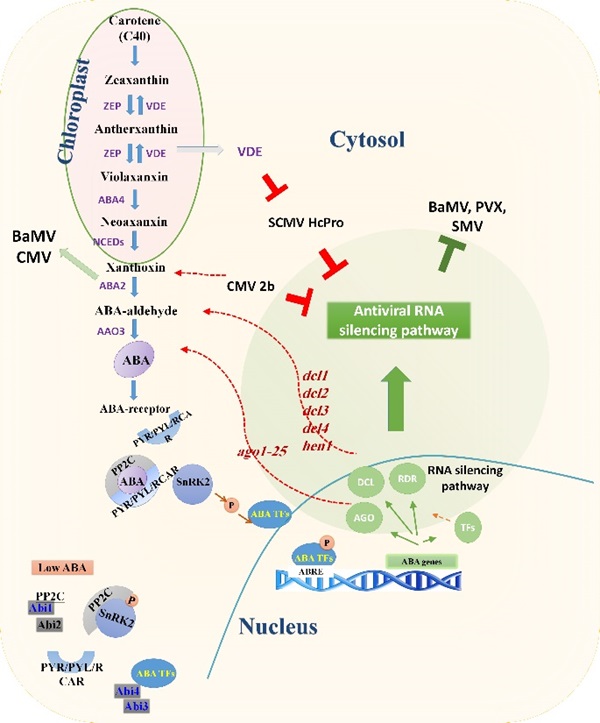[Na-Sheng Lin] Review article- Interplay between ABA signaling and RNA silencing in plant viral resistance
POST:The stress hormone abscisic acid (ABA) regulates plant responses to different stimuli. ABA triggers two antiviral defense mechanisms in plants in response to viral infection, i.e. the antiviral RNA silencing pathway and callose accumulation. In some pathosystems, ABA induction of these defense mechanisms is stronger in plants with resistance R-genes than in more susceptible plants. However, some viruses can reverse the ABA effect and induce susceptibility in infected plants. Several RNA silencing genes have been suggested to exert a regulatory feedback loop in the ABA signaling pathway because their mutants are ABA hypersensitive. This scenario suggests that RNA silencing genes can target genes involved in the ABA pathway to control ABA production/signaling since prolonged production of this stress hormone arrests plant growth and development. Mutations in the ABA or salicylic acid pathways do not completely repress RNA silencing genes, indicating that RNA silencing represents a regulatory hub through which different pathways exert some of their functions, and thus its activity could be a subject to hormone balancing in plants. Alazem, M and Lin NS* (2020). Interplay between ABA signaling and RNA silencing in plant viral resistance. Current Opinion in Virology, 2020 42:1-7. https://doi.org/10.1016/j.coviro.2020.02.002
